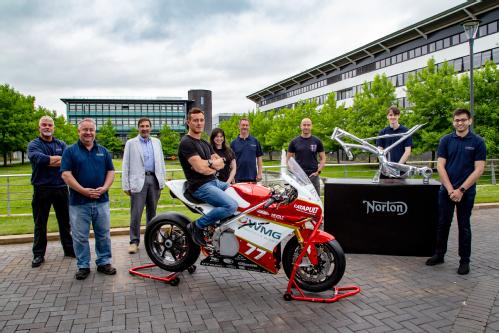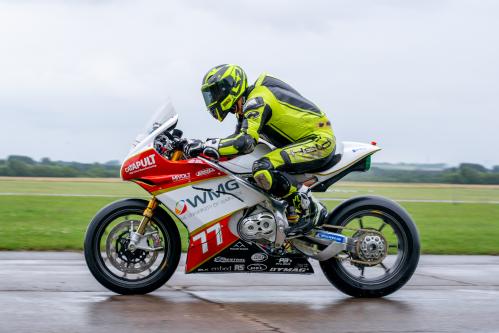Success Story Assetbank
WMG Announce Take Off for the New eVTOL Battery Diagnostic Algorithm
Background
The world is witnessing a paradigm shift in aviation, with electrified aircraft presenting a promising solution to reduce environmental impact through lower emissions of noise and pollutants. Within this transformative landscape, electric Vertical Take-Off and Landing (eVTOL) aircraft have emerged as one of the most innovative designs, offering quieter, safer, and low-cost possibilities for urban air mobility and sustainable transportation. However, the successful integration of eVTOL technology hinges on addressing critical concerns surrounding battery safety, a challenge that Warwick Manufacturing Group (WMG) took on with unparalleled determination and expertise.
Vertical Aerospace Ltd (VA) is a British technology aerospace that is pioneering electric aviation and was set up by entrepreneur Stephen Fitzpatrick in 2016. Based in Bristol, Vertical is working with world-leading suppliers and partners to decarbonise air travel using the best technologies from across the aviation, energy, and automotive industries with the aim to provide faster, quieter, greener, and smarter ways for people to travel around cities and regions.
As the eVTOL sector continues to gain momentum, lithium-ion batteries have become the primary choice for meeting the power and energy density demands of these aircraft. However, organisations express apprehension about battery safety, especially in the aerospace domain where the consequences of failure could be catastrophic.
Challenge
Vertical Aerospace are a pioneering and best in class management company with a technical team hand-picked from the aerospace and advanced automotive sectors and 300+ in-house engineers. The challenge for Vertical Aerospace for certifying batteries is that there was no battery diagnostic system capable of detecting potential faults in eVTOL battery packs before take-off.
With this challenge in mind, Vertical Aerospace approached WMG and set out to help fill this crucial gap in the industry. The diagnostic system was to be an innovative blend of cutting-edge electro-chemical methods, ensuring the seamless integration of advanced technology into aircraft systems.
In response to this pressing need, WMG embarked on a pioneering project to develop a revolutionary smart-diagnostic charge device for eVTOL aircraft batteries. This device aimed to enhance in-flight performance, safety, and, most importantly, enable fit-to-fly certification of the battery pack before every flight.
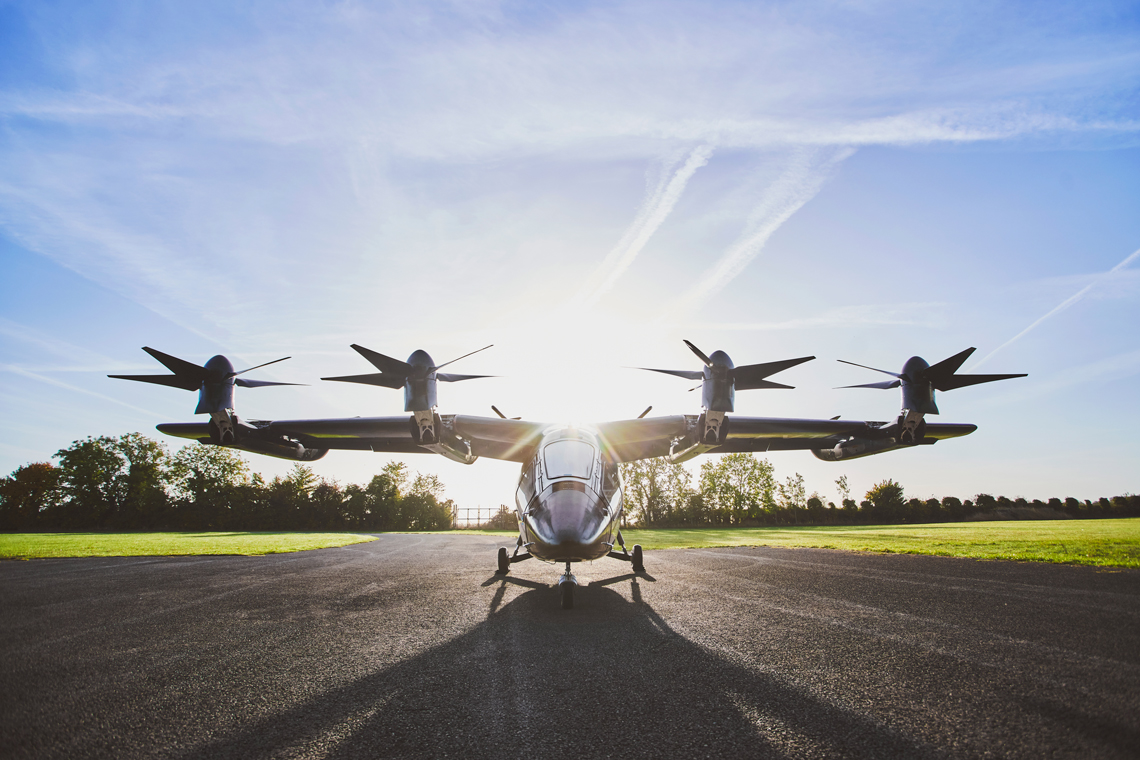
Image courtesy Vertical Aerospace
Solution
As part of a £2.3m project funded by ATI (Aerospace Technology Institute) through Innovate UK, a collaborative project was launched with VA. WMG's diagnostic algorithm demonstrated its capability to detect potential battery faults with unmatched accuracy. The algorithm capitalises on the battery data collected by the battery management system (BMS) during charging. The system underwent rigorous testing and validation using battery modules provided by VA. This crucial feature enabled VA to implement the diagnostic procedure for fit-to-fly certification of their battery packs before every flight, bolstering aviation safety and instilling confidence among passengers and industry stakeholders.
The device's exceptional performance and reliability not only met the project's objectives but also exceeded expectations, marking a remarkable milestone in aerospace technology.
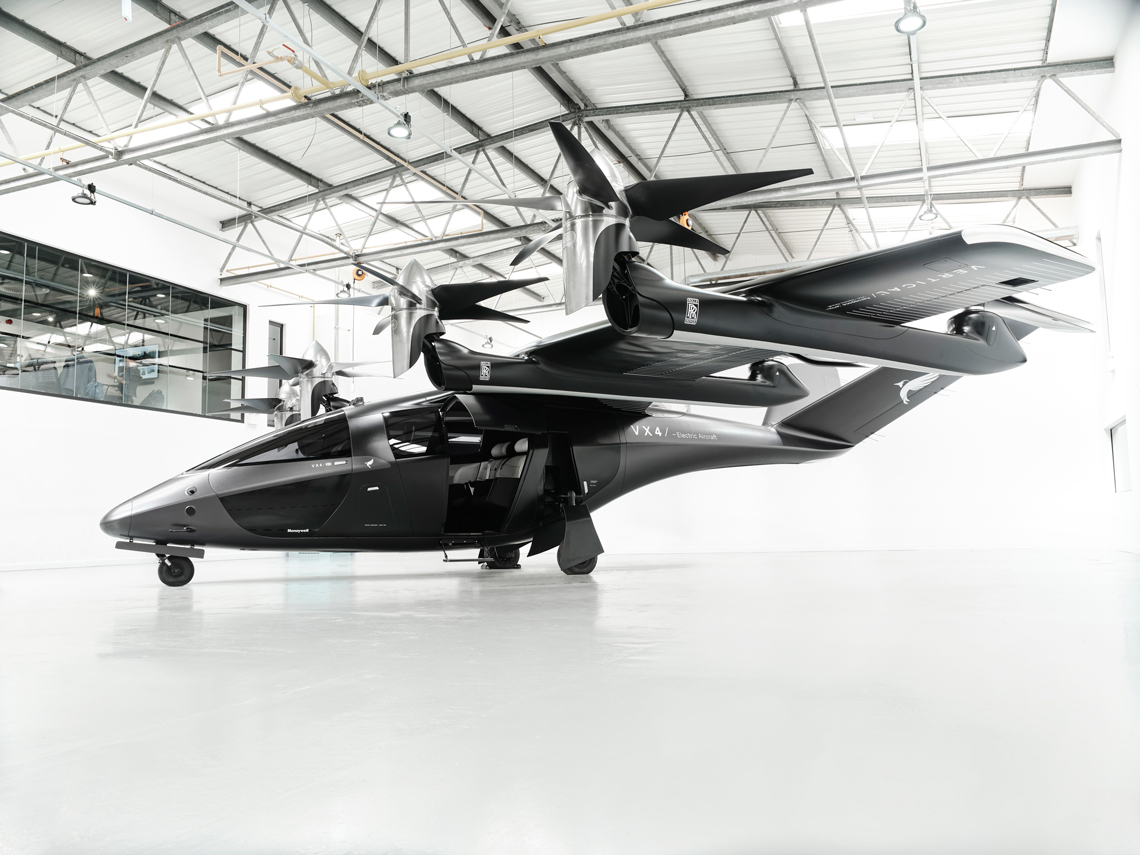
Image courtesy Vertical Aerospace
“Battery systems including charge and diagnostics testing are well-known in academia and industry; having undergone years of development and research for the automotive market.
“An aerospace application provides a fantastic opportunity to utilise methods, designs, models, and algorithms that were not financially, volumetrically, or technically feasible before. Using these novel approaches, we plan to significantly improve the safety, range, and capability of our battery system.”
Limhi Somerville, Head of Energy Storage at Vertical Aerospace
Impact
The impact of WMG's eVTOL diagnostic technology reverberated far beyond the confines of the project. The successful outcome of this groundbreaking initiative opened doors to a broader consortium collaboration with AMEC, demonstrating the industry's recognition of WMG's ability and capabilities. AMEC (Advanced Mobility Ecosystem Consortium is aiming to demonstrate the commercial and operational viability of Advanced Aerial Mobility (AAM) in the UK, has been awarded a £9.5m grant by the UK Government’s Future Flight Challenge to develop the essential building blocks of a viable AAM ecosystem that has the potential to be progressed into full commercial operations. The algorithm for this is being further developed to extend its capability to work with new battery technologies.
Additionally, WMG's trailblazing work in aerospace electrification played a crucial role in securing funding for future projects like ZEST (Zero Emissions for Sustainable Transport). This has reaffirmed their position as pioneers in sustainable aviation research on battery safety evaluation through experimental research and creation of new models to prediction LIB failure modes appropriate to aerospace. It includes the use of novel in-cell instrumentation to measure failure and system level strategies to mitigate propagation.
The collaborative partnership with VA resulted in a mutually beneficial knowledge exchange. WMG shared invaluable expertise, code, and battery parameterisation insights with VA engineers, empowering the industrial partner with essential capabilities they lacked in-house. Furthermore, WMG provided unwavering support to VA in data factory generation, further enhancing their ability to optimise battery pack performance.
The smart charger will be used for Vertical's recently unveiled passenger model, VA-1X. Capable of carrying a pilot and four passengers for up to 100 miles at speeds of 150mph. They aim to certify in early 2026.
“The successful integration and management of battery systems within future electric aircraft represents a significant research challenge and one that WMG is excited to be working on in partnership with Vertical Aerospace.
“This project has allowed us to expand our capabilities in battery characterisation, battery system modelling and novel methods of fault diagnosis and prognosis. All within a sector that is strategically important for the UK as it move towards its zero emissions transport targets.”
Professor James Marco, University of Warwick
Notably, the development of the eVTOL diagnostic device revolutionised aerospace battery technology. The technology's uniqueness and pioneering nature can potentially increase battery pack usage in various aircraft and promote second-life applications. By extending battery life and repurposing used packs, the project aligns with sustainability goals, reducing the environmental impact associated with battery manufacturing.
Conclusion
WMG's commitment to innovation and excellence in aerospace technology has borne fruit through the development of the eVTOL diagnostic device. This project produced a prototype smart-diagnostic algorithm for the eVTOL aircraft battery. It will use innovative and cutting-edge electro-chemical methods and allow improved in-flight performance, safety, and assist in future certification of battery systems.
The prototype smart-diagnostic charge device is poised to redefine the future of eVTOL aircraft, enabling greener and safer flights, and paving the way for a sustainable aviation industry.
As the world continues to embrace electrified aviation, WMG's expertise stands ready to shape the future of aerospace technology. Their portfolio of success stories and invaluable contributions to the industry is a testament to their dedication for progress and sustainability. Companies and organisations in the aerospace sector can find a reliable partner in WMG, poised to propel them into a new era of innovation and success.
Find out how WMG can help you start your own success story in aerospace electrification. Contact us at wmgbusiness@warwick.ac.uk and embark on your journey towards innovation and sustainable aviation solutions.
Journeying to a Wireless Future
Challenge
Wireless charging means being able to charge an electric vehicle without having to plug it in, which can be easier than wired charging, and negates the need for cables. This means there are no trailing cables or heavy connectors which reduces clutter and trip hazards. It’s accessible for people with disabilities, more convenient for fleet charging, and can even enable autonomous vehicles to charge themselves. Charging could be completed at taxi ranks and short-stay car parks like when visiting a supermarket.
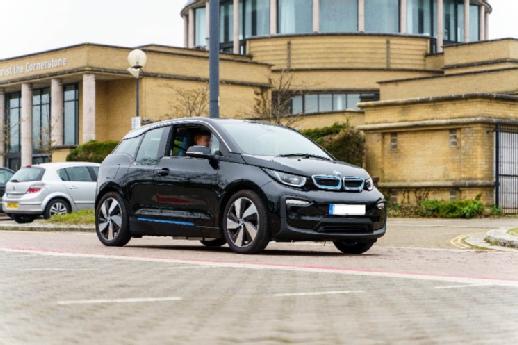
In wireless inductive charging systems, high frequency electricity is supplied to a ground pad giving rise to a pulsating magnetic field. This allows power to be transmitted contactlessly via the electromagnetic link to the receiver pad embedded in the base of the vehicle and following rectification it is fed to the DC terminals in the vehicle. A sophisticated control system manages the flow of power to the battery.
Currently, there is no UK supply chain for this technology. High Value Manufacturing Catapult at WMG set out to address this. WMG took on the challenge to design, build and retrofit to an electric vehicle a fully UK-made 20kW wireless charging system. Along with honing expertise as part of this process, engaging with potential UK supply chain partners was a key priority, recognising that many elements of wireless charging systems would be new to potential UK suppliers. WMG was able to work with a range of companies in fabricating and assembling parts for the system (pad-makers, potters, etc.), mechanical integration (retrofitters), electrical integration (EV charger specialists) and back-office (communications, app interface, metering and billing specialists).
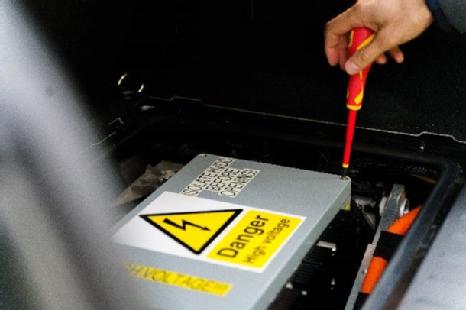
Solution
WMG designed, assembled, tested and delivered a working prototype of a 20kW rated wireless charging system, retrofitted and electrically integrated on a BMW i3. Supply chain partners were engaged to construct various parts of the system according to WMG’s specification. WMG contributed expertise in wireless charging, use of a high-performance computing cluster, along with purpose-built analytical design scripts to explore the large potential design space and find an electromagnetic and resonant circuit configuration that would meet requirements. WMG’s laboratory facilities were used to assemble and test the overall system.
The project was a significant step up from previous work, taking a wireless system beyond the laboratory bench and integrating it with a vehicle.
The physical delivery of the wireless charging system was performed under the MK GUL (Milton Keynes Go-Ultra-Low) project, where WMG was contracted through eFIS (an ARUP subsidiary) by Milton Keynes Council for delivering electric vehicle charging or charging support technology. The resulting wireless charging system was publicly demonstrated in three events in Milton Keynes in a central car park location. The demonstration system is mobile (with no permanent ground works on site) so can be used in various locations.
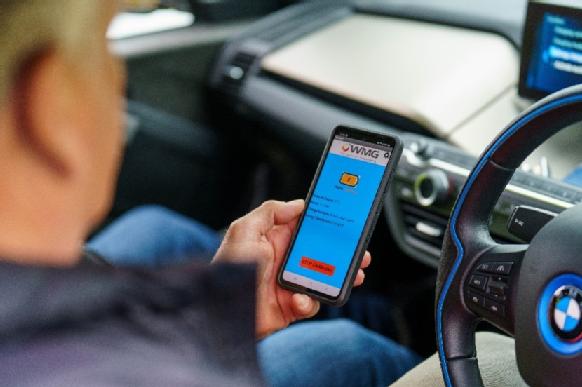
During the demonstration events, members of the public and representatives of the project’s organisations drove the electric vehicle around the car park and aligned it in its parking space containing the charging ground pad. Then they initiated, monitored and terminated the charging process through a mobile app developed by WMG.
Impact
The prototype wireless charging system demonstrated is thought to be the first UK-designed and built wireless charging system to have been retrofitted to an electric vehicle.
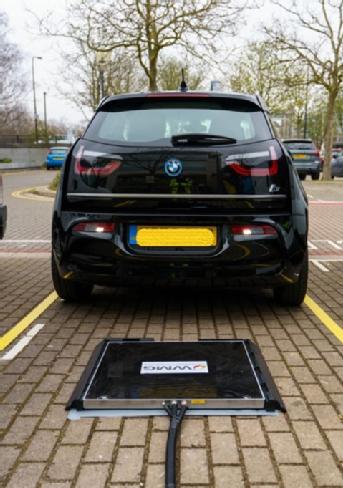
As part of follow-on work relating to the Innovate UK OSRIC project, a second copy of the wireless charging system is being constructed for which further UK companies are being engaged and knowledge transfer occurring so that they can understand the assembly activities that were carried out at WMG.
WMG has a notable track record and experience in delivering a number of wireless charging projects, although this is the first one which has been taken out of the lab setting and into a fully functional practical application. WMG took a leading role in the design, development and knowledge transfer regarding wireless charging technology.
Future research will explore further aspects of systems to make them more commercially acceptable and easier to adopt. Also extending research capabilities into the high and very high frequency wireless charging systems, alongside continued engagement with industry partners for the development of a UK supply chain. WMG is not seeking to manufacture systems directly, so working alongside UK-based SMEs will be critical to getting the technology applied in “real life” and commercialised. WMG therefore invites more commercial partnerships in this sector.
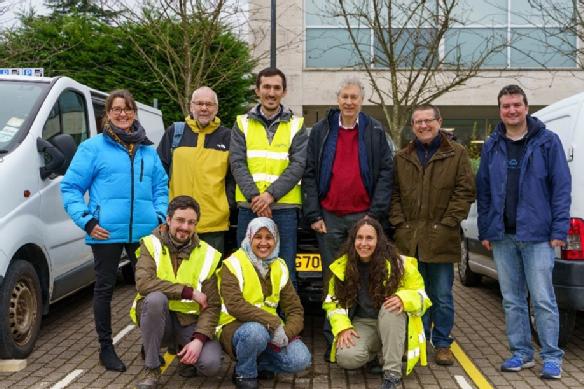
Pictured: Members of the project team from WMG (University of Warwick), eFIS (ARUP), and Milton Keynes Go-Ultra-Low.
Uni-WARP project supports companies in a shift to transport electrification
Transport is now the highest emitting sector of the UK economy, accounting for 22% of total green-house gas emissions. The Government has announced plans to make every mode of transport net zero emissions by 2050 and has set ambitious decarbonisation targets. Electric vehicles (EVs) are seeing a surge in demand, with sales of battery electric and plug-in hybrid vehicles accounting for over 13% of sales in January 2021 compared with 6% in 2020 (Society of Motor Manufacturers and Traders, SMMT). But market opportunities in other transport sectors, such as two-wheeled vehicles, aerospace and marine, are growing significantly.
Challenge
While automotive battery technology is relatively well established, other transport sectors are at an earlier stage in their electrification journey. This led to new partners from sectors such as aerospace and off-highway approaching WMG with questions like “what size of battery do I need?” and “what is its mass and volume?”
Engineers in our Energy Innovation Centre (EIC) set out to create a set of easy-to-use modelling tools to provide simple answers to these questions. These tools would support OEMs in non-automotive sectors to better understand battery capacity and sizing as well as analysing the cost-benefit ratio over the lifetime of a single vehicle or fleet.
The Uni-WARP project was funded by WMG Centre High Value Manufacturing (HVM) Catapult and aimed to create tools to help companies to make the right choices early, saving time and cost, ultimately enabling the shift to transport electrification.
Solution
Our team of technical experts created a unique database using real-world battery data compiled from over ten years’ of cell characterisation data from WMG’s own labs, as well as publicly available data on energy and power requirements for electric and hybrid vehicles.
Several models and tools were created to help businesses select the right approach to suit their needs, in terms of system architecture, configuration, cells, subsystems and control.
Two of the key tools of use to industry, trade bodies and Government agencies are:
- Ready reckoner: a high-level sizing tool for wheel-based, aircraft, rail, marine, off-highway and public service vehicles. It calculates the battery size, weight and cost to support decision making.
- Cost-Benefit Analysis (CBA) tool: uses high-level battery pack cost estimates to determine the potential costs and benefits over different timescales and for different technologies. The CBA tool provides a £/kgCO2 saved, and a payback period for the savings compared with a conventional product.
Impact
The tools have already been a critical enabler in electrification decisions for several businesses. In particular, the tools have received positive feedback from firms in the aerospace industry including operators and airports who are working with WMG to help them meet their sustainability targets
The Uni-WARP toolchain was utilised within the Innovate UK funded “Triumph TE-1” project, which aims to create an electric motorcycle technology demonstrator, in collaboration with Triumph Motorcycles Ltd, Williams Advanced Engineering, Integral Powertrain and WMG.
Uni-WARP formed the basis of a study investigating the CO2 savings, cost benefit, energy usage and vehicle payback period for electric motorcycles, for different user groups within the UK. Outputs from study are supporting Triumph with respect to their future product plans and business strategy. Defined CO2 savings and energy usage from this study are directly supporting a government strategy document for electric two wheeled vehicles.
Natalie Fern-Lyons, Special Engineering Programme Lead, Triumph Motorcycles Limited commented, “The battery sizing and cost-benefit analysis tools were a vital input in the Triumph TE-1 project. Understanding the CO2 and energy savings will help us develop a business case for Triumph’s future electric motorcycle offer.”
The tools generated through this project will continue to be used to underpin other collaborative projects across multiple sectors, as well as helping companies to enhance their understanding of battery technology. Further to this, we are supporting trade bodies such as the Aerospace Technology Institute (ATI) to understand the CO2 savings and energy usage in aerospace and aviation.
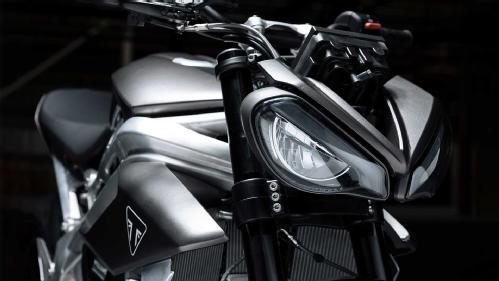
Students race Embracing sustainability and electrification through motorcycle racing
The UK has formalised its ambitions to accelerate the shift to zero emission vehicles over the last year, which has been illustrated through policy commitments such as the government’s Ten Point Plan for a Green Industrial Revolution.
To reinforce this commitment, the transition to Electric Vehicles (EVs) of all types is being encouraged, with manufacturers doing all they can to make electrified mobility as convenient and cost effective as possible.
Aiming to embrace sustainability and electrification through motorcycle racing, a group of 15 undergraduate and EngD students from WMG, Engineering, Mathematics, Law, Computer Science and Physics departments across the University of Warwick set out ambitions to research the future of electric motorcycle racing in the summer of 2019. The goal was to overcome the challenge of designing, building and racing the University’s first fully electric race-spec superbike.
The Warwick Moto project was supported by WMG Centre High Value Manufacturing Catapult, alongside a selection of leading academics, engineers and researchers, all aiming to help create an electrically powered racing bike. The aim is to promote sustainability through electrification without compromising the characteristics seen in standard race-spec bikes. The project provided an opportunity for students from across the University to expand their knowledge and understanding of an industrial project.
Frontier: An innovative electric superbike solution
Impressed by the students’ ability to design a superbike demonstrated through the preceding ‘Aurora’ project, OEM manufacturer Norton Motorcycles decided to establish a collaboration with students from Warwick University, donating a high-performance sports bike frame and data to support the project and help nurture the skills of the students.
Culminating in the racing bike coined ‘Frontier’, the group produced a solution in just seven months, designing an electric powertrain to accompany the frame, which produces a power output of 160kW and 400Nm torque. This has been coupled with an immersion-cooled battery pack, which is a first of its kind for application in an electric motorcycle, with benefits including extended range and faster charging speed. A tailored control system has also been developed, demonstrating the in-house capability across the group.
The acceleration and speed characteristics of the electric bike in motion translate into a combustion-engine equivalent of around 900cc to 1,000cc.
In order to further the technology, the team also decided to utilise standard charging protocols on the vehicle, allowing not only fast charging capability but also the ability to charge at electric vehicle spots across the country. The vehicle uses the ChAdeMo protocol, and combined with immersion cooling, the team can charge to 80% in just 30 minutes.
These impressive figures have supported the testing and development of the electric bike prototype, with riding time on the track maximised thanks to reduced charging times.
Aman Surana, former Chief Engineer of the Warwick Moto team, said:
“The efforts of the whole Warwick Moto team during my time leading the project resulted in an innovative superbike in Frontier, which has now been widely showcased. Having now graduated, and since achieving a position at Norton Motorcycles, I can see how the learning and experience garnered throughout the project, both in terms of engineering and real-world management, were directly relevant and complementary to the requirements of modern industry. I look forward to seeing what the new cohort of students in the team have planned for the next instalment of the Warwick Moto project.”
Nesta Ferguson, new Chief Engineer of the Warwick Moto team added: “The collaboration between Norton and WMG at The University of Warwick to create the Frontier amounted to a fantastic example of sustainable EV innovation. The team hopes to set a precedent to its competitors and technological demonstrators and highlight how innovative projects like the Frontier are crucial if we are to help create a sustainable future. My role now is to build on the momentum established throughout the project. To do this, we have created a vision, which includes a four-year plan to ensure the longevity and continued development of the project.”
On-campus research has been reinforced with input, support, mentoring, and technical guidance from Norton’s own designers and engineers, further to the supply of the frame.
Making race debuts
Having undergone significant testing including much computer-based validation and modelling around thermal management, along with physical testing of cells and modules, Frontier has made several appearances outside of the workshop in recent weeks. This includes testing at Bicester Heritage where rider, Tom Weeden, summarised his first experiences:
“The first test aboard Frontier and working with the Warwick University team absolutely surpassed all my prior expectations. The professionalism of all the students was superb throughout and I had no issues trusting in the electric bike ‘Frontier’ that they had tirelessly created in such a short space of time.
“We eased into the test slowly, with an initial low power run at approx. 25% power output. Despite this, my initial feeling was hugely positive. The throttle connection and delivery of the power weren’t too dissimilar to a conventional internal combustion powered bike which was a pleasant surprise! As we upped the power the potential of the Norton framed Frontier bike was clearly evident! She handled beautifully from the off and with a little further testing time to dial in the suspension we can further enhance this. In fact, I found the bike really easy to ride - no gears, just twist and go and lots of fun! Despite the slight weight increase to a conventional bike the team have balanced it perfectly - plus there is plenty of potential for future suspension/geometry tweaks to further enhance the overall handling. All in all, a positive test showing plenty of potential for much more in the future! It’s an absolute pleasure and honour to be involved with the Frontier project!”
Having taken the bike to its first conference at the world’s number one festival of electric vehicles and clean energy, Fully Charged Live 2021, the team impressed the public once more by showcasing the bike alongside some of the largest EV manufacturers in the world at LCV Cenex 2021.
Dr Robert Hentschel, CEO of Norton Motorcycles, said:
“We are thrilled to be able to support the engineers of the future, who are developing tomorrow’s technology today on the basis of a Norton frame. Our support by means of donation of the frame is just the beginning. Norton’s team of designers and engineers have been very interested to observe how this project is taking shape, supporting the student team wherever possible with advice and guidance.”
Significant support from industrial partners such as the High Value Manufacturing (HVM) Catapult team at WMG, University of Warwick, Norton Motorcycles, Michelin Motorcycle PLC, MIVOLT by M&I Materials, PWR Advanced Cooling Technology, DYMAG Performance Wheels, Laserlines, Wraptastic, Rock West Composites, Xometry, Renthal, Pro-Bolt, embed, R&G Racing, R&G Gleam, HEL, and RS Components have immensely helped the team.

